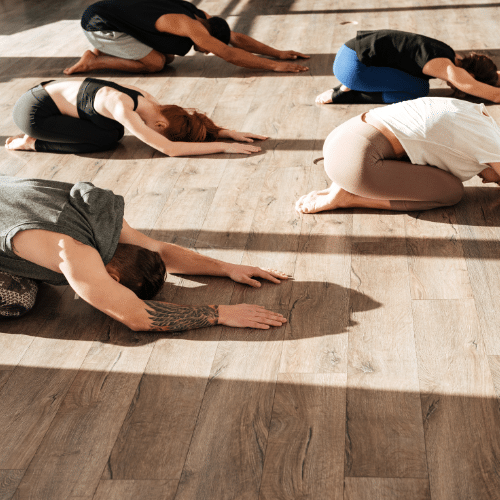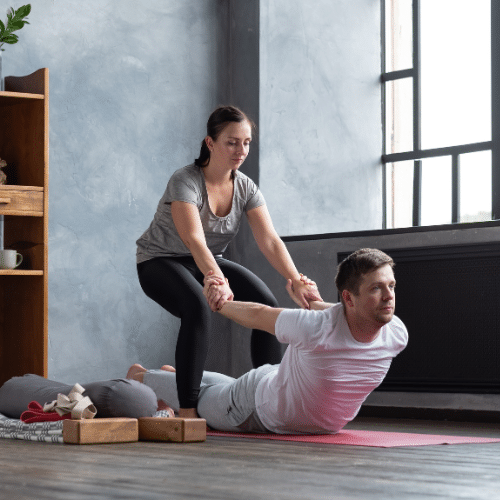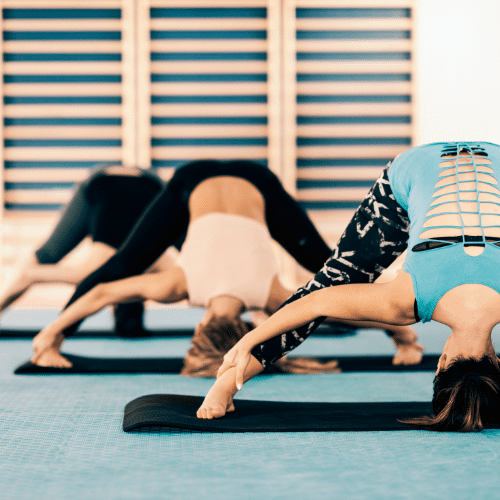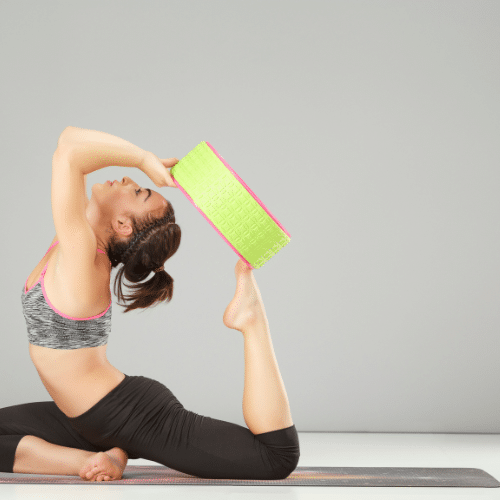When you think of Paripurna Navasana or full boat pose, you might think of a challenging yoga pose that requires you to balance on your sit bones with your legs and arms extended.
While that is one way to do boat pose, there are many variations of this pose that can make it more accessible for beginners or more challenging for advanced practitioners.
In this article, we’ll explore three boat pose variations that can help you rock Paripurna Navasana and reap the many benefits of this pose.
What Is Boat Pose?
First of all, it’s important to understand what boat pose is. Boat pose, or Paripurna Navasana, is a sitting yoga position that strengthens the abdominal muscles and lengthens the spine. This pose gets its name from its similarity to a boat shape, with your body forming the hull and your arms the oars.
There are many benefits to practicing this pose, including improved digestion, increased flexibility in the spine and hips, and toning of the abdominal muscles. Boat pose is also said to help relieve stress and fatigue.
The Classic Boat Pose
This is the boat pose that you are probably most familiar with. It is a more advanced variation and requires good balance and core strength.
The steps:
1. Sit upright on your mat with your knees bent and feet flat on the ground.
2. Place your hands on the ground beside you, fingers pointing forward.
3. Lean back slightly and lift your feet off the ground, so that your shins are parallel to the ground.
4. Straighten your legs and lift your heels toward the sky.
5. Engage your core muscles and bring your chest forward.
6. Reach your arms forward toward your knees, parallel to the ground, clasping them together if you want.
7. Hold for 5-10 breaths and then, on an exhale, slowly release back to your starting position.
It may look easy, but this pose will test your balance and core strength. Make sure to progress slowly and build your muscles as you learn.
This variation is a great way to build strength in your core and back. If you have any lower back pain, this pose can help to stretch and release the muscles.
Boat Pose with Bent Knees
One of the boat pose yoga variations that is great for beginners is with bent knees. This variation is more gentle on the lower back and allows you to focus on lengthening your spine.
Follow this step-by-step guide to practicing boat pose with bent knees:
1. Sit on your mat with your legs extended in front of you.
2. Bend your knees and place your feet flat on the floor.
3. Place your hands on the floor beside you with your fingers pointing toward your feet.
4. Exhale as you lift your feet off the floor and bring your knees toward your chest.
5. Inhale as you lift your shins toward the ceiling, parallel to the floor, keeping your back and shoulders straight but knees bent.
6. Exhale as you lift your chest off the floor and bring your arms out to the sides, parallel to the ground.
7. Hold this position for 5-10 breaths.
8. To release, exhale as you bring your knees back toward your chest and place your feet on the floor.
This Navasana pose variation is a great way to build strength in your core muscles and lengthen your spine. However, one reason that this variation will be difficult for some people is that it can put a lot of strain on the lower back. If you have any lower back pain, be sure to practice this pose with bent knees.
Boat Pose with Arm Support
This variation strengthens the arms and legs while also providing support for the back. It is also a good option for beginners who have trouble balancing in full boat pose.
To get into this variation, follow these steps:
1. Sit on the mat with your knees bent, feet flat on the floor, and hands behind you.
2. Lean back slightly and lift your feet off the ground.
3. Bend your elbows and place your hands on the floor beside you, keeping them shoulder-width apart.
4. Engage your core muscles and lift your feet off the ground.
5. Straighten your legs and point your toes towards the ceiling.
6. Hold this position for 5-10 breaths before releasing back to boat pose.
This variation is very similar to boat pose, but with added arm support. The extra support makes this variation more accessible for beginners, while still providing a good workout for the legs and core.
You can also use this variation to help you build up to boat pose if the full pose is too challenging.
Safety Precautions
Boat pose is generally safe for practitioners of all levels, but there are a few things to keep in mind if you have any injuries or medical conditions:
- If you have asthma, practice boat pose with caution. Deep inhalations can trigger an asthma attack. Be careful to monitor and control your breaths so you can relax.
- If you have high blood pressure, be careful not to overdo boat pose. Go only as far as you feel comfortable and stop if you feel any pain.
- If you have any injuries, especially on the back, neck, shoulders, or hamstrings, practice boat pose with caution or a qualified yoga instructor. Do not try to force your body into the pose if you feel any pain.
- Boat pose is generally not recommended if you are pregnant. However, there is some controversy and some practitioners claim that boat pose is good for pregnant women to strengthen their core and pelvic floor muscles. If you are pregnant, it is best to consult a doctor or experienced yoga instructor before trying this pose.
Conclusion
Boat pose is a great way to build strength in your core and back. It can also help to stretch and release tight muscles.
There are three main boat pose variations: the classic boat pose, boat pose with bent knees, and boat pose with arm support.
If you have injuries or medical conditions or are pregnant, please consult your doctor before trying boat pose.
Start by practicing boat pose with bent knees and work your way up to the full pose. Remember to breathe deeply and evenly throughout the pose.
Practice boat pose a few times a week and soon you’ll be rocking Paripurna Navasana like a pro!









